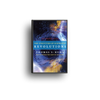Most people think science progresses like savings accounts — slow, linear compounding.
Thomas Kuhn destroyed that fantasy.
His message was simple: science doesn’t evolve. It revolts.
In The Structure of Scientific Revolutions, Kuhn, a historian of science, shows us how real change happens — not inch by inch, but revolution by revolution. One mental model gets so broken that it’s abandoned.
Not fixed. Abandoned.
Similarly, AI in your profession isn’t “advancing.” It’s breaking the paradigm and building a new one.
And most professionals haven’t realised they’re clinging to the old one. Here's how you can make sure you're not one of them.

Why This Book Matters Today
Kuhn didn’t just write a book on science.
He wrote a manual on how to smell a revolution.
And we're going through one today.
My Key Learnings From The Book:
1. Normal science before a revolution is slow and incremental.
“Puzzle-solving” is Kuhn’s polite word for times like these. It means glorified clerical work in a system that already assumes the answers.
- That’s what school, most educational programs, most jobs still are. Optimising old rules.
- It will take about a year or more to figure out deeply that the rules have changed.
2. Revolutions start when the old system stops making sense.
“Anomalies” don’t get resolved. They accumulate. Until something snaps.
- AI writing better essays than students, automating code, passing law exams — some major systems are about to snap.
- But most people are still trying to explain it away with old-school logic.
3. New paradigms don’t "add on" to old ones. They replace them.
You don’t upgrade the horse. You invent the car.
- Smart professionals have stopped looking for AI just to “help” their existing workflow.
- It’s not a tool. It’s a smart junior assistant. It's better to adapt to relevance instead of preparing for irrelevance.
4. Old experts and professionals defend dying paradigms the hardest.
Paradigms don’t die from debate. They die off when their believers retire.
- If you’re waiting for your boss, your professor, your regulatory or certification body to validate or encourage your AI skills — you’re wasting your time.
- Take the initiative to tinker. The best professionals, investors and entrepreneurs do.
5. Revolutions are invisible until they’re irreversible.
“What a person sees depends upon what they look at and what their prior experience has taught them to see.”
- By the time you “see” the change, it’s late. So your career, your mindset and your edge need to adapt quickly.
Here Are Two Stories From Kuhn and History That Explain What's Happening with AI
(And Why It's Confusing Most Professionals)
Story 1: Oxygen - The Element Nobody Saw Coming
Before oxygen, chemists believed in phlogiston — a substance that was supposedly “released” when things burned. It explained combustion — until it didn’t.
A man named Joseph Priestley accidentally isolated oxygen in 1774, but even he couldn’t see what he’d found. He still framed it through the old model: dephlogisticated air.
It took a scientist named Lavoisier to reinterpret the data and name a new paradigm: oxygen is real. Phlogiston? It was out.
Most professionals are still stuck in this “phlogiston logic” — interpreting AI’s behaviour using outdated mental models.
Lesson: You can hold the future in your hands — and still not recognise it, if your paradigm is broken.
Story 2: Copernicus - The Earth Moves, The Sun Doesn't
Copernicus published a revolutionary document called De revolutionibus orbium coelestium in 1543, proposing that the Earth orbits the Sun.
But his model wasn’t more accurate — initially, it was worse than his predecessor Ptolemy’s.
Why? Because he was still using circular orbits instead of ellipses.
It took decades, Kepler, and then even Newton for the model to finally beat the old one on predictions.
But the real change? Not better data. Just a better lens.
Similarly, AI may not always outperform humans in a measurable way at everything - yet. But the paradigm is what’s shifting. Here's the new one:
We’re no longer the centre of cognitive labour.
Lesson: Like Earth in Copernicus’ time, we’re the ones who are moving — but your institutions may have not yet caught up. So you need to.
My Checklist of Habits from The Structure of Scientific Revolutions by Thomas Kuhn
“The scientist is not a passive observer of nature, but an active participant in shaping what is seen.” — Thomas Kuhn
1.Watch for anomalies. Look for exceptions.
Don’t dismiss the weird result. That’s where the gold is.
Don’t dismiss what looks stupid. That’s often the crack in the wall.
2.Break your own boxes.
What if your current thinking frameworks are the limits?
To survive a scientific revolution, you must remember that first, you are not a CA, MBA, lawyer, entrepreneur or investor. You are, first and foremost, a revolution detector. So start to think like one.
3.Study history - but don’t worship it.
Science doesn’t always progress by addition. Sometimes, it breaks and rebuilds.
4.Learn tools, but also learn mental models.
Understanding how paradigms shift is more important than mastering any one tool.
5.Practice conceptual humility.
The best thinkers aren’t those with the right answers, but those asking the right questions within the new paradigm.
6.Find your bearings in a shifting professional world.
You don’t need to be right immediately. You need to be alert, adaptable, and alive to possibility.
7.Assume your old mental models will expire.
All paradigms have shelf lives. Yours and mine do too.
“A new scientific truth does not triumph by convincing its opponents... but rather because its opponents eventually die.” – Max Planck (quoted by Kuhn)
Here's A Simple Model By Kuhn To Understand The AI Revolution
Thomas Kuhn broke down the lifecycle of a scientific revolution into stages. AI will follow them too. Here is how the AI script is playing out and what it means for you:
Stage 1: The Normal Science - “Play the game. Don’t ask why.”
In this stage, Kuhn says: This is science during peaceful times. Researchers refine, measure, tweak, optimise — all within the assumptions of the current paradigm.
They’re not solving mysteries. They’re solving puzzles inside a known box.
How Stage 1 Happened in AI:
A decade ago — machine learning was a narrow field.
Academics were tuning models for image recognition.
GPTs were sci-fi.
Everyone just played the deep learning game.
Bigger datasets, better benchmarks, cooler whitepapers.
“Normal science... is a strenuous and devoted attempt to force nature into the conceptual boxes supplied by professional education.”
– Thomas Kuhn
Stage 2: The Anomaly Appears - “Wait. That’s not supposed to happen.”
In this stage, Kuhn says: Anomalies are bugs in the matrix. Observations that the current paradigm can’t explain. Most are ignored... until one isn’t.
How Stage 2 Happened in AI:
GPT-2 and GPT-3 were anomalies.
LLMs trained to predict text started coding, writing essays, solving logic puzzles, teaching maths - all without being explicitly taught.
The system started doing things they never trained it to do. That’s not a feature. That’s a crack in the paradigm.
“Discovery commences with the awareness of anomaly… and ends only when the paradigm is adjusted.”
– Thomas Kuhn
Stage 3: The Crisis - “The box is broken.”
In this stage, Kuhn says: Too many anomalies pile up. The paradigm begins to creak. Confidence wobbles. The model isn’t just outdated — it’s now useless.
How Stage 3 Happened in AI:
Jobs are being redefined. Education models are collapsing. Artists, programmers, lawyers, teachers — everyone is suddenly asking:
“Wait… is this still my job?”
The current systems (legal, ethical, educational) can’t really handle AI’s behaviour yet.
That’s a textbook Kuhnian Crisis.
“Crisis loosens the rules of normal puzzle-solving... It is a necessary precondition for the emergence of novel theories.”
– Thomas Kuhn
Stage 4: The Revolution – “Burn the old playbook.”
In this stage, Kuhn says: The old theory is dumped. A new paradigm emerges. It explains the anomalies, sets new rules, creates a new normal.
How Stage 4 Is Happening in AI:
We are here at the moment.
Old assumptions — “humans are the only ones who can reason, create, write, think” — are dying or dead.
The shift to AI changes everything — not just how we work, but what “work” even means.
“Paradigm change means a reconstruction of the field from new fundamentals... a transformation of the world within which work is done.”
– Thomas Kuhn
Stage 5: The Resistance - “The old guard won’t go quietly.”
In this stage, Kuhn says: The revolution threatens careers, institutions, egos. The old experts dig in. The ones who don’t change - eventually get replaced.
How Stage 5 Will Happen in AI:
Gatekeepers still argue that AI can’t “truly” think. That humans are irreplaceable.
Academia, legacy media, policy - a lot of folks are in defensive mode.
But history is clear. Paradigm shifts won’t wait for permission. They will just move on.
“A new scientific truth does not triumph by convincing its opponents... but because its opponents eventually die.”
– Max Planck, via Kuhn
Stage 6: The New Normal Science - “The game restarts. New rules. New puzzles.”
In this stage, Kuhn says: Once the dust settles, a new normal will begin. New tools. New problems. New experts. This will become the new baseline — until the next anomaly.
How Stage 6 Will Happen in AI:
We’re rewriting the definitions of intelligence, creativity, even consciousness. AI-first thinking will become the standard model of work.
LLMs, agents, multimodal reasoning will be the new baseline.
“Each paradigm will be judged largely by the community that uses it... The old and new paradigms are incommensurable.”
– Thomas Kuhn
Every revolution looks like madness - until it becomes the manual.
Kuhn’s genius was this: he showed us revolutions aren’t exceptions. They’re the engine of real progress.
Why Kuhn Believed Your Textbooks Lied About Science
Kuhn slams how scientific revolutions get erased by textbooks.
Once a new paradigm is accepted, the messiness is swept under the rug.
Textbooks rewrite history to make it look like the new model was always obviously right.
And the result? Students across the world grow up believing science is linear, clean, and rational — when in reality, it’s disruptive, political, and uncertain.
Today’s institutions — universities, firms, governments — still teach the pre-AI curriculum like it’s gospel.
By the time they update, Kuhn predicts that this revolution will also already be rewritten as if it was obvious.
The people who adapt during the mess get ahead.
Everyone else reads about it in a textbook later.
Lesson: If you wait for certainty, you’ll miss your opportunities. Revolutions reward the uncomfortable, not the certain.
Who Should Read This Book?
Samridh’s Library recommends this book for:
- CAs, MBAs, Lawyers and Professionals who rely on legacy models, frameworks, and credentials — and need to know when the ground is shifting beneath them.
- Designers and Creators
who want to understand why new ways of working are always mocked before they’re mainstream. - Entrepreneurs, Investors and Fund Managers building businesses in uncertain markets — where the real risk isn’t being wrong, it’s staying loyal to the old playbook.
Final Thought:
“To be a normal scientist is to be committed to the belief that the world is ordered, and that the tools we have can reveal its structure. But to be a revolutionary scientist or professional is to recognise when those tools no longer serve.”
Listen to The Companion Episode
Want to listen to me narrate this guide while you're driving, working out, travelling or when you just can't read? Click below.
Listen to this on ᯤ Spotify | Listen to this on Apple Podcasts
Want to be notified when new ideas are released? Follow The Samridh's Library Podcast on Spotify or Apple Podcasts to be notified automatically when a new episode is up.



